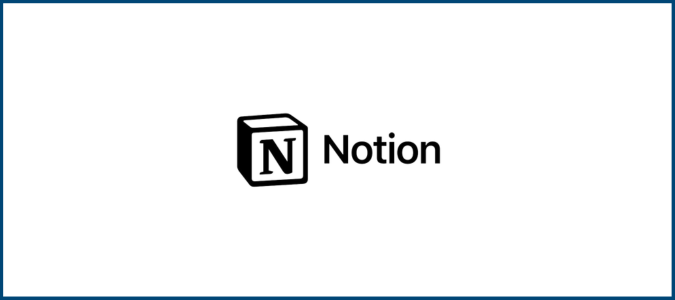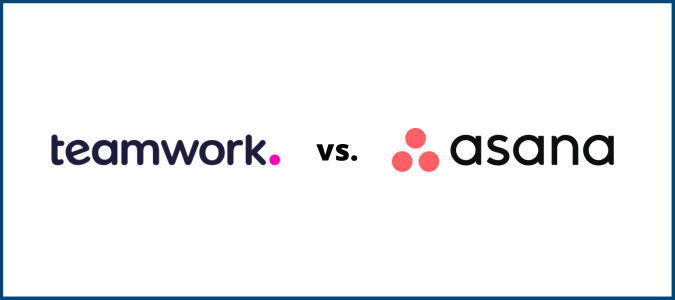Visure Requirements is a robust and highly collaborative requirements management tool and ALM solution designed for teams building complex products and systems. It offers innovative, specialized, and user-friendly solutions to centralize requirements, risk, and testing in a single platform to promote team productivity and collaboration. Other useful features include integration with top software tools and broad project methodology support. The main issue with Visure Requirements is its complicated setup and configuration, which increases time to value, but otherwise, it’s a great option for improving the quality of development at your organization.

Visure Requirements Compared to the Best Requirements Management Tools
After careful consideration, we decided not to include Visure Requirements on our list of the best requirements management tools. While it’s very customizable and adaptable, the setup and configuration challenges and complex report templating can make requirements management time-consuming and difficult. If time is of the essence, we recommend checking out our Golden Eggs:
Confluence keeps all your requirements in one reliable, easily accessible place and offers 75 easy-to-use templates to facilitate planning and collaboration. Try the Standard or Premium plan for free for seven days.
Monday.com’s innovative and simple approach (i.e., project roadmaps, customizable templates, Kanban boards) significantly flatten the learning curve to master requirements management. Start your 14-day free trial today.
ClickUp has the most versatile and comprehensive toolbox, including task dependencies, Agile board view, and sprints to facilitate efficient and effective requirements management. Contact the ClickUp team to get a custom quote.
Visure Requirements: The Good and the Bad
If you’re looking for a requirements management solution you can trust, Visure Requirements has got you covered. With its seamless traceability management, quality analysis, and requirements versioning, you can be sure you’re on the right track. Plus, it simplifies compliance and supports extensive integration and data models, making team alignment and collaboration a breeze.
But there are a few cons, too. The interface is a little dated, which could compromise your user experience and performance. And with so many features and functionalities to choose from, setting up and configuring Visure Requirements is also a bit of a challenge, prolonging the time it takes to see results.
What Visure Requirements Is Good At
Visure Requirements is one of the most trusted requirements management solutions, and this isn’t an empty claim. It offers seamless traceability management that extends to quality analysis and requirements versioning. Simplified compliance, extensive integration, and data model support are other significant advantages that help improve team alignment and collaboration.
Centralized Requirements Management and Version Control: By combining this, test, and requirements management in a single solution, Visure Requirements makes a great choice for teams building complicated and high-quality products with verified and validated requirements.
It helps you comply with applicable regulatory requirements and provides end-to-end traceability across risks, requirements, tests, and effects. You can also use Visure Requirements to customize your requirements management process at any level. Simply select specific items to get traced within the platform or between other automatic and bi-directional integration tools like Jira Software.
Improved Team Alignment and Collaboration: Visure Requirements simplifies creating alignment between teams, which also helps boost productivity and collaboration. You can also integrate the Visure Requirements ALM platform with your team’s daily-use tools through automatic and bi-directional synchronizations. This will eliminate duplicate asks and reduce the need for entering changes between platforms to enhance productivity and collaboration.
Visure Requirements also provides an open-source API to automate repetitive tasks in your requirements, risk, or testing processes within the platform. Your team can automatically measure requirements quality through AI tech, consider reusable requirements and components, and manage the change of reduced components across projects to configure and enforce traceability within data models.
Configuring ITEM templates at a high-general level and using them across projects is another helpful feature to enforce high-quality requirements.
Simplified Compliance: Visure Requirements offers several pre-built templates based on various important standards, such as FMEA, ISO 26262, IEC 61508, IEC 62304, DO-178B/C, and SPICE. These serve as a great starting point, helping save a lot of time that would otherwise have been spent complying with standards that apply to your organization.
Another benefit is that these templates are customizable and can be changed according to one’s requirements.
Extensive Integration and Data Model Support: Visure Requirements supports XML-based standards (for example, XRI and ReqIF) and popular software like Jira Software, IBM Doors, and VectorCAST, allowing you to exchange requirements between different customers and suppliers.
The requirements management tool also supports several development processes like Agile, V Model, and Waterfall, which makes it easier to analyze the specific problems within your business models and provide a solution and data model for each particular need. Note that these data models are customizable, so you can adjust and enforce them as per your or your client’s internal processes.
Top-notch Quality Analysis and Security: Using Visure Requirements’ Quality Analyser, you can do an in-depth semantic analysis of requirements to identify their quality better. This also prevents lower-quality requirements from moving to the next phase in the development cycle.
As an organization making top-quality software, we know security is paramount. Understanding this, Visure Requirements has implemented proper information and requirements security. It has a strict access policy that ensures only authorized people can access the artifacts—a restriction that extends to the elementary level.
What Visure Requirements Is Lacking
Visure Requirements is an impressive tool, but it falls short in some areas. First, it has a dated interface that compromises user experience and, at times, performance. It’s also complicated to set up and configure, which can prolong your time to value when combined with its overwhelming set of features and functionalities.
Dated User Interface and Look: Visure Requirements has a more dated look than other requirement management tools. Several users have pointed this out, hoping for an improved user experience and updated interface controls.
Additionally, Visure Requirements tool performance significantly lowers when managing more than 50,000 items on the platform, which also means there will be a dip in productivity. Creating report templates is also tedious and unnecessarily complicated, further compromising user experience.
Complicated Setup and Configuration: Visure Requirements has one of the most challenging setups and configurations as a requirement management solution. Although the steps are straightforward, there’s a lot to do, which makes the installation time-consuming.
Overwhelming Feature Set: If you‘re working on a short-term project with no cross-project impact, Visure Requirements might be unsuitable for your requirements needs.
Being one of the more heavyweight tools, Visure Requirements has an overwhelming set of features and capabilities, a few of which probably overlap with other tools your team uses in-house. This contributes to a steep learning curve, which may prolong the requirements management and testing processes.
Visure Requirements Options and Pricing
Visure Requirements is an excellent choice for empowering engineering teams’ productivity and collaboration. But aside from the Requirements ALM platform, you can take advantage of a host of other tools.
It’s important to note that Visure hasn’t published pricing information on its website. You have to fill out and submit a form, and then its sales team will get in touch with a custom price quote based on your needs.
Visure Contributor

Visure Contributor is a web-based application that allows internal and external users to participate in, discuss, and approve project elements in your review process with a read-only license. You can use it to view the information across projects and comment on those items.
It uncomplicates the team review process for every user experience level. While it’s simple enough for occasional users like external contractors and management personnel, it has several advanced features that senior technical engineers or managers require.
Visure Contributor also lets you create baselines or specific documents for the entire project, then assign them to users to electronically sign it. Visure supports the electronic signature to meet with FDA 21 CFR Part 11.
Visure Report Manager

Your team can use Visure Report Manager to generate custom reports for different Visure Requirements projects. This helps simplify reporting and documenting by delivering necessary regulatory compliance evidence, session summaries, requirement specifications, dashboards, and any other required output.
You can decide on the look and formatting of the report templates. At the time of report creation, Visure Report Manager will pull the data from the Visure database, populating your selected template. You can then export the data in different formats.
The fact that these reports can be established at project levels and are reusable for other projects helps standardize and harmonize documentation across the organization.
Visure Quality Analyzer

Visure Quality Analyzer lets you accurately and automatically analyze the quality of requirements, helping you avoid wasting resources because of poor requirements. This also prevents ambiguous specifications from being sent across the organization, lowering the chances of errors in system development.
Visure Quality Analyzer uses a Natural Language Processing (NLP) engine to actively seek out potential areas for ambiguity. Not only does this improve requirement usability, but it also increases project management success. The tool also highlights the requirements that need your attention and saves custom quality triggers and phrases to improve documentation consistency.
Visure Automated Checklists

Engineering teams and organizations can use the Visure Automated Checklist feature to easily import and integrate a checklist for automated templates into the tool. This has a two-way effect, leading to increased productivity and decreased development cycle times.
These automatic checklists are also helpful in managing compliance. You also have the option to create checklists and templates and import them within the tool.
Visure Tool Qualification Package

The Visure Tool Qualification Package add-on is a series of documents within a specific Visure project.
It is a series of questions, actions, and instructions your team should follow to validate a tool’s performance for compliance. This helps simplify your team’s audit and compliance process, especially if you build complex products in heavily regulated industries.
Visure Requirements in Summary
Visure Requirements is undoubtedly one of the better requirements management tools on the market. With an extensive albeit overwhelming feature set, the seamless ability to create, edit and manage requirements easily within the tool, and excellent collaboration functionalities, it’s a solution your team can rely on to develop quality products and complete projects on time. However, its complicated features and options may not make it the best solution for your needs.
But Visure Requirements is not your only option. If you’re looking for more user-friendly and visually appealing software, we recommend you look at our reviews of the best requirements management tools, featuring top picks like Confluence and Monday.com.















